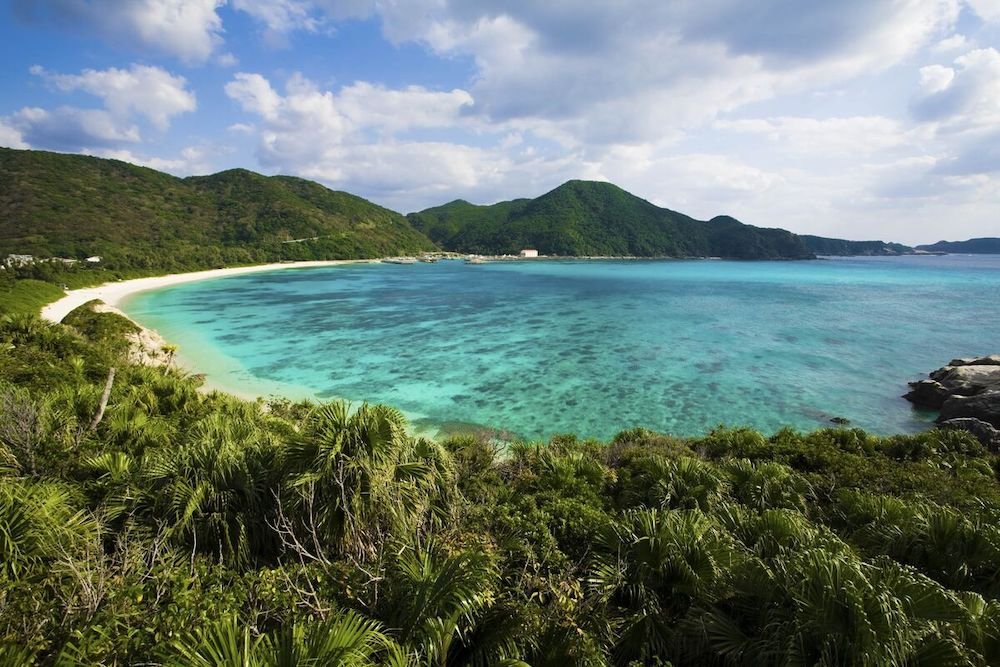
Want to discover the best Japanese islands you should visit on your next holiday?
Japan, a country steeped in history, culture, and natural beauty, is often celebrated for its bustling cities and technological advancements.
Yet, beyond the neon lights and urban landscapes lies a less explored world of breathtaking diversity and serenity: the Japanese islands.
This archipelago nation is dotted with over 6,800 islands, each offering its unique blend of natural wonders, ancient traditions, and modern delights.
From the northern reaches of Hokkaido to the subtropical climes of Okinawa, the Japanese islands present an array of experiences that are as varied as they are captivating.
The allure of exploring these islands lies in their ability to transport visitors from the familiar paths of well-known destinations to the serene and sometimes mystical landscapes that few have the privilege to witness.
Whether it’s the dramatic volcanic landscapes of Sakurajima, the crystal-clear waters of the Kerama Islands, or the ancient forests of Yakushima, each island is a testament to the natural beauty that has been preserved and revered throughout Japan’s history.
These islands are not just destinations but gateways to understanding the depth of Japanese culture, the resilience of its people, and the harmonious balance between nature and human innovation.
Why Visit Japanese Islands?
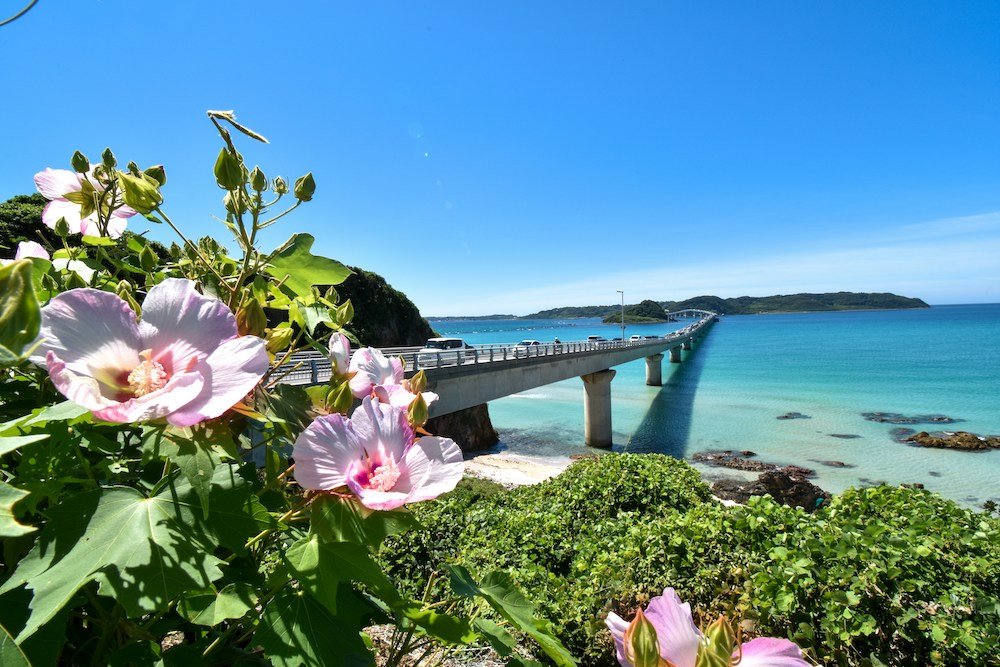
Rich Cultural Heritage
The Japanese islands offer a treasure trove of cultural heritage, each island weaving its own story into the rich tapestry of Japan’s history.
From the ancient Ryukyu Kingdom of Okinawa-Hontō to the sacred rituals of the island shrines, visitors have the unique opportunity to delve into practices and traditions that have been preserved for centuries.
These islands serve as guardians of Japan’s soul, offering insights into the evolution of Japanese culture, from samurai legends to the delicate art of tea ceremonies, making them essential destinations for anyone seeking to understand the depth of Japan’s cultural heritage.
Unique Ecosystems and Biodiversity
Beyond their cultural significance, the Japanese islands are biodiversity hotspots, each boasting unique ecosystems that are as diverse as they are spectacular.
From the subtropical rainforests of Yakushima to the coral reefs surrounding the Kerama Islands, nature enthusiasts will find themselves in a paradise of flora and fauna.
These islands are home to species not found anywhere else in the world, offering unparalleled opportunities for wildlife observation and environmental appreciation.
The commitment to conservation and sustainable tourism ensures that these natural wonders will continue to thrive and inspire for generations to come.
Serene Landscapes and Pristine Beaches
The landscapes of the Japanese islands are postcards come to life, offering serene beauty that calms the soul and invigorates the spirit.
Whether it’s the volcanic majesty of Sakurajima, the emerald forests of Izu-Ōshima, or the crystal-clear waters of the Miyako Islands, each destination provides a backdrop for moments of reflection and tranquility.
The pristine beaches, often untouched by the hustle and bustle of city life, offer a sanctuary for those seeking peace and solitude amidst nature’s splendor.
Adventure and Relaxation
For adventurers and relaxation seekers alike, the Japanese islands cater to every type of traveler.
Thrill-seekers will find their hearts racing as they navigate the rugged landscapes of Rishiri-tō or dive into the underwater worlds of Ishigaki-jima.
Meanwhile, those looking to unwind can bask in the therapeutic waters of a natural hot spring on Enoshima or indulge in the tranquility of a remote beach on the Kerama Islands.
The balance between adventure and relaxation on these islands offers a rare opportunity to tailor a travel experience that rejuvenates both the body and the mind.
The Japanese islands, with their rich cultural heritage, unique ecosystems, serene landscapes, and plethora of adventure and relaxation opportunities, stand as a testament to the beauty and diversity of Japan.
Each island invites travelers to explore beyond the familiar and immerse themselves in experiences that resonate on a deep, personal level.
Whether you’re drawn to the allure of ancient traditions, the call of the wild, or the simple joy of a quiet beach, the Japanese islands await with open arms and endless possibilities.
Now, let’s take a closer look at the 15 best Japanese Islands:
1. Sakurajima
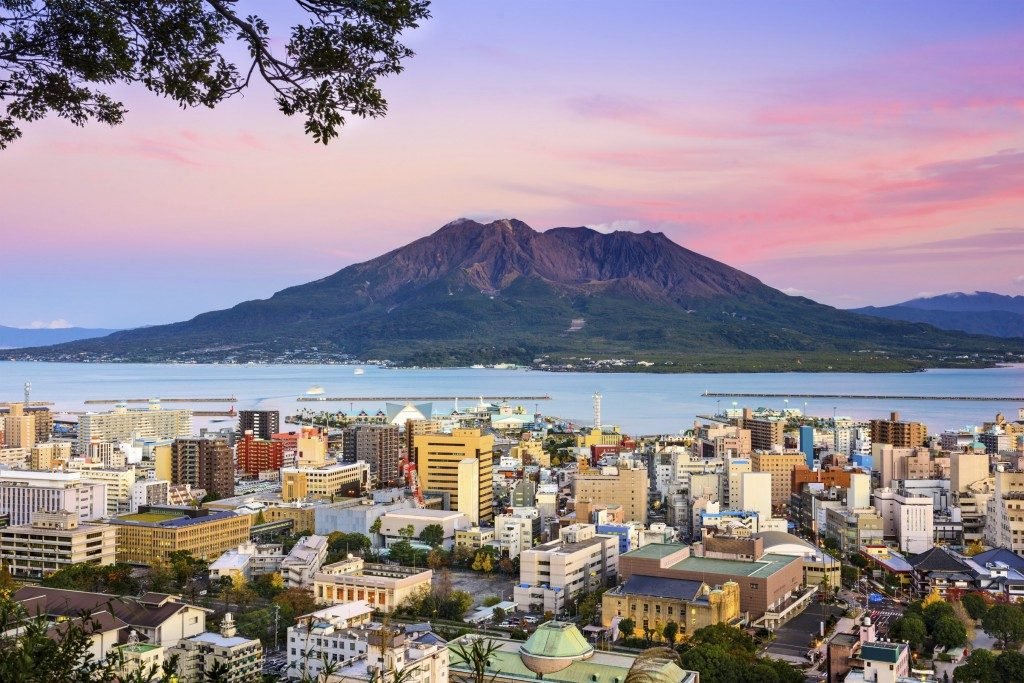
Sakurajima, an emblematic figure against Kagoshima’s skyline, is one of Japan’s most active volcanoes, located in the southern part of Kyushu in Kagoshima Bay.
This island, with a circumference of about 50 kilometers, once stood as a separate island until the 1914 eruption connected it with the Osumi Peninsula.
Its dramatic landscape, consisting of three main peaks—Kitadake, Nakadake, and Minamidake—continues to evolve with each eruption, drawing visitors from around the world to witness its majestic power.
Natural Attractions and the Best Things to Do
The natural allure of Sakurajima lies in its dramatic volcanic landscape, offering unique experiences such as walking paths that weave through lava fields and observation points that provide views of the active craters.
The Yunohira Observatory, positioned at a high vantage point, offers unparalleled views of the volcanic activity and the surrounding area.
Apart from volcanic sightseeing, the island is known for its Sakurajima Daikon and Sakurajima Komikan, among the largest radishes and smallest mandarins in the world, which are a must-try for visitors.
Cultural and Historical Significance
Sakurajima’s history is deeply intertwined with that of Kagoshima, reflecting a coexistence with volcanic activity that dates back centuries.
The island is home to several shrines that pay homage to the deity of the volcano, showcasing the local reverence for nature’s power.
The annual Sakurajima Kurokami Shrine festival is a testament to the island’s rich cultural fabric, where locals and visitors alike participate in rituals to pray for safety from eruptions.
Activities and Experiences
While Sakurajima may not offer traditional beach activities due to its volcanic nature, it compensates with a host of other adventurous pursuits.
Hiking trails lead to scenic viewpoints and through areas showcasing the geological wonders of past eruptions.
The island’s proximity to Kagoshima allows for easy exploration of city attractions, including hot spring baths that utilize the geothermal energy of the region.
Local cuisine, heavily influenced by the volcanic soil, offers unique flavors, with the Sakurajima Komikan mandarins and other local produce being must-tries.
Best Time to Visit
The best time to visit Sakurajima is during the spring (March to May) and fall (September to November) months when the weather is mild, and the skies are clearer, providing better views of the volcano and surrounding landscapes.
These seasons also see fewer tourists, offering a more serene experience of the island’s natural and cultural beauty.
However, visitors should always stay updated on volcanic activity and advisories when planning their trip.
2. Okinawa-Hontō
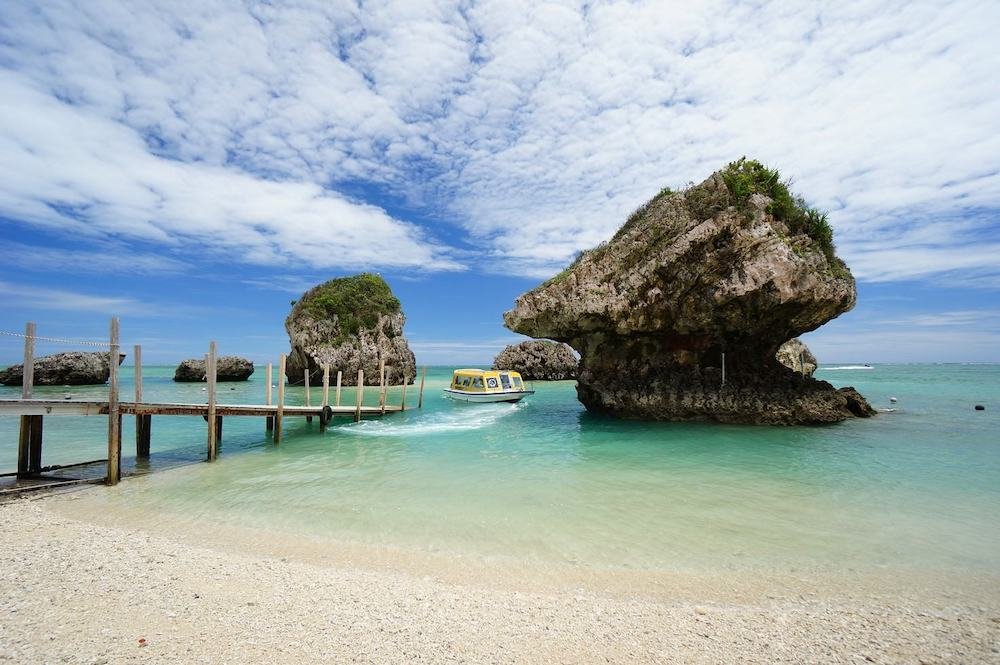
Okinawa-Hontō is the largest of the Okinawa Islands and the Ryukyu Islands chain, situated in the southern part of Japan.
It serves as the political, economic, and cultural center of Okinawa Prefecture.
The island spans approximately 1,206 square kilometers, featuring a subtropical climate that nurtures a rich natural environment and diverse wildlife.
Naha, the capital city located on the island, is the main gateway for travelers exploring the Ryukyus.
Natural Attractions and the Best Things to Do
Okinawa-Hontō is renowned for its stunning natural beauty, characterized by emerald green waters, white sandy beaches, and vibrant coral reefs.
The island’s subtropical climate allows for a plethora of outdoor activities year-round.
Popular natural attractions include the breathtaking Cape Manzamo, the tranquil Miyagi Coast, and the mysterious Valley of Gangala.
Visitors can indulge in water sports such as diving and snorkeling to explore the rich marine life, enjoy kayaking in the mangrove forests, or simply relax on the pristine beaches.
Cultural and Historical Significance
Okinawa-Hontō holds a deep cultural and historical significance, with a history that dates back to the Ryukyu Kingdom era.
The island is dotted with various cultural sites, including the UNESCO World Heritage-listed Shuri Castle, which stands as a symbol of the Ryukyu Kingdom’s former glory.
Local traditions such as Eisa dance, Ryukyu classical music, and the unique Okinawan cuisine reflect the island’s rich cultural heritage.
The island also played a significant role in World War II, with the Battle of Okinawa leaving a lasting impact on its history and development.
Activities and Experiences
Okinawa-Hontō offers a wide range of activities and experiences that cater to all types of travelers.
Diving and snorkeling are among the top activities, with the island’s clear waters providing perfect conditions for exploring coral reefs and marine life.
Hiking enthusiasts can explore the island’s lush landscapes, including the trails at Yanbaru National Park.
The local cuisine, with specialties such as Goya Champuru (bitter melon stir-fry) and Okinawa Soba, offers a culinary adventure that reflects the island’s unique blend of Japanese and Southeast Asian influences.
Best Time to Visit
The best time to visit Okinawa-Hontō is from late March to early May, during the spring season when the weather is mild and the cherry blossoms are in bloom.
Another great period is from October to November, which offers comfortable temperatures and less rainfall.
Summer months from June to August can be quite hot and humid, while the island experiences its rainy season from May to June.
However, Okinawa’s subtropical climate makes it a viable travel destination year-round, depending on your preferences for activities and experiences.
3. The Kerama Islands
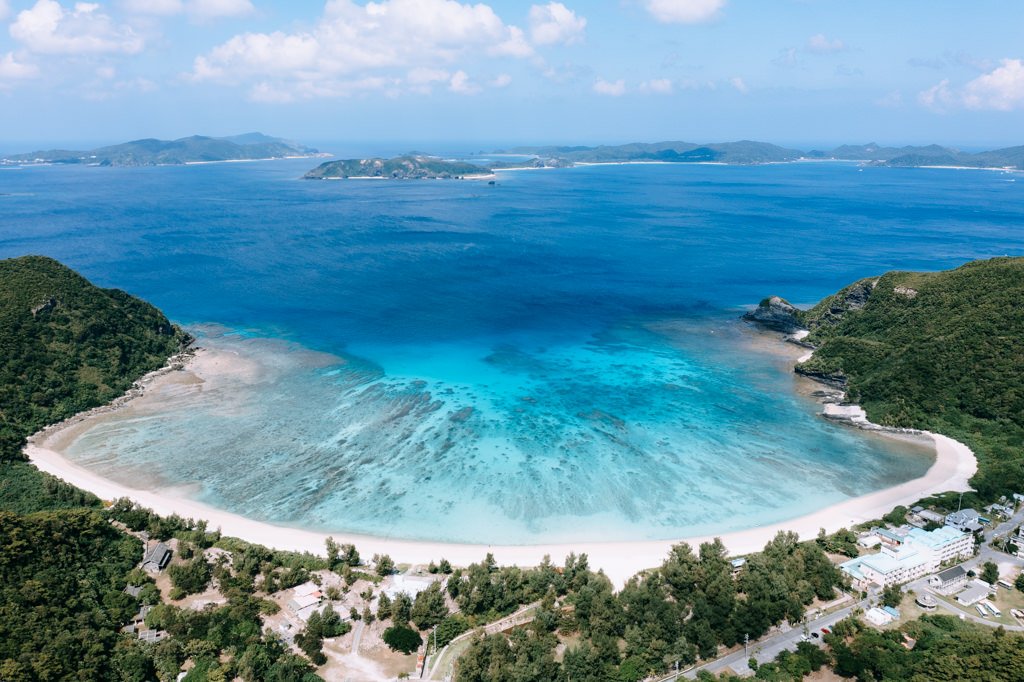
The Kerama Islands are a stunning archipelago located approximately 40 kilometers west of Okinawa-Hontō in the East China Sea.
This group of islands includes some 20 islands, but only four are inhabited: Tokashiki, Zamami, Aka, and Geruma.
Known for their breathtakingly clear waters, with visibility up to 50 meters, the Keramas have been designated a National Park to protect their pristine natural beauty.
The archipelago is celebrated for its spectacular marine life, coral reefs, and the serene, unspoiled beaches that dot its landscape.
Natural Attractions and the Best Things to Do
The Kerama Islands offer an array of natural attractions, making them a paradise for nature lovers and marine enthusiasts.
The islands are famed for their incredible snorkeling and diving spots, where visitors can swim alongside sea turtles and a colorful array of tropical fish.
Tokashiki Island is known for its beautiful Aharen Beach and Tokashiku Beach, ideal for swimming and sunbathing.
Zamami Island offers excellent whale watching opportunities from January to March, as humpback whales migrate through the waters.
Cultural and Historical Significance
While the Kerama Islands are primarily known for their natural beauty, they also hold cultural and historical importance.
The islands played a strategic role during World War II and were the site of significant naval battles. Today, monuments and memorials on the islands pay homage to this history.
The local culture is deeply connected to the sea, with traditional fishing and navigation methods still practiced.
The Kerama Islands also celebrate unique local festivals that offer insight into the community’s rich heritage and traditions.
Activities and Experiences
The Kerama Islands are a haven for activities centered around the beauty of the natural environment.
Diving and snorkeling are among the most popular activities, with the islands’ waters offering some of the best conditions in the world for marine exploration.
Kayaking and paddleboarding are great ways to enjoy the crystal-clear waters and explore the coastline.
On land, hiking trails provide panoramic views of the islands’ stunning landscapes. Visitors can also savor local cuisine, which heavily features seafood, offering a taste of the islands’ culinary traditions.
Best Time to Visit
The best time to visit the Kerama Islands is from March to June when the weather is warm, and the seas are calm, making it ideal for snorkeling and diving.
This period also coincides with the whale watching season, offering an added attraction.
The summer months can be hot and are the peak tourist season, so visiting in the early spring or late fall can offer a more tranquil experience.
The islands’ climate is relatively mild year-round, making any time a good time to visit, depending on personal preferences for activities and the level of tourist activity one is comfortable with.
4. Yakushima
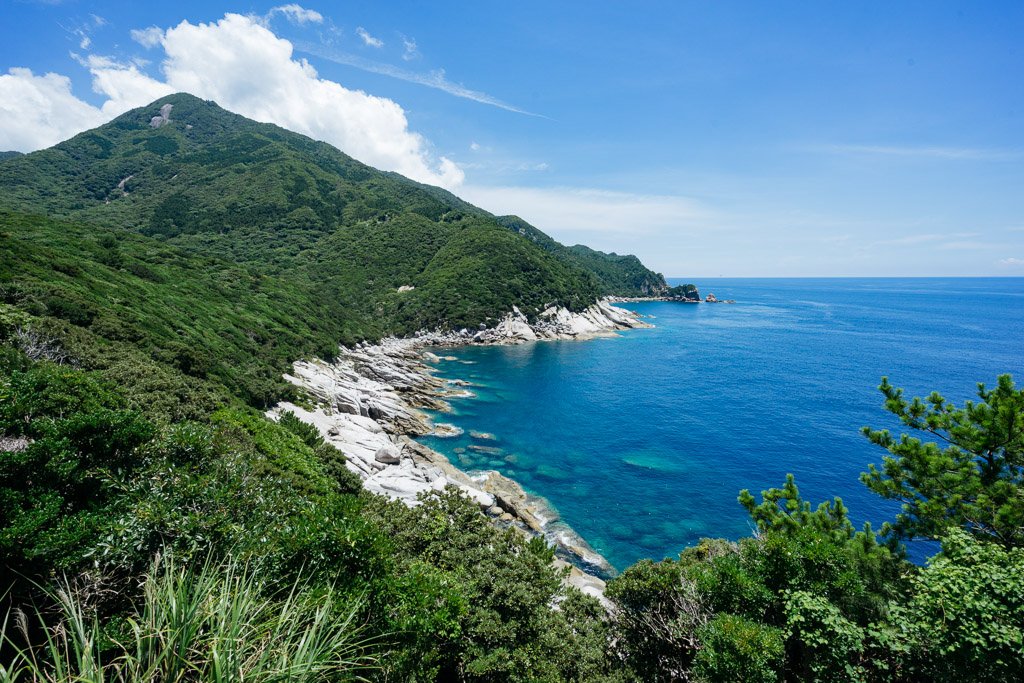
Yakushima is a remote island located off the southern coast of Kyushu, Japan.
Part of Kagoshima Prefecture, it is renowned for its ancient cedar forests, some of which are over a thousand years old.
The island’s rugged terrain, encompassing mountains that rise to 1,935 meters at Miyanoura-dake, Japan’s highest peak south of the Japanese Alps, creates a dramatic landscape.
Yakushima’s unique ecosystem, thanks to its subtropical climate with a heavy rainfall, has earned it UNESCO World Heritage status.
Natural Attractions and the Best Things to Do
Yakushima’s natural beauty is unparalleled, making it a paradise for nature lovers and outdoor enthusiasts.
The island’s ancient cedar forests, including the Jomon Sugi, believed to be up to 7,000 years old, are its most famous attraction.
Shiratani Unsuikyo Ravine offers stunning hiking trails through moss-covered forests, providing inspiration for the animated film “Princess Mononoke.”
For beach lovers, Nagata Inakahama is known for its seasonal turtle nesting.
The island also features hot springs, waterfalls, and mountain peaks, offering diverse outdoor activities from hiking and trekking to relaxing in natural onsens.
Cultural and Historical Significance
While Yakushima is primarily known for its natural beauty, it also holds cultural significance.
The island’s relationship with nature has deeply influenced local customs and lifestyles, reflecting a unique blend of Shinto and Buddhist beliefs.
The Yakushima Environmental Culture Village Center provides insights into the island’s ecology and cultural heritage.
Local festivals and practices, such as the Yakushima Toka Festival, celebrate the island’s natural bounty and spiritual significance.
Activities and Experiences
Yakushima offers a wide range of activities beyond its famous hiking trails. Diving and snorkeling around the island reveal a rich marine life and beautiful coral reefs.
Kayaking in the Anbo River provides a different perspective of the island’s lush landscapes.
The island’s cuisine, which emphasizes local ingredients like flying fish, wild vegetables, and Yakushima deer, offers a taste of its natural wealth.
Traditional crafts, such as cedar woodworking, showcase the island’s cultural heritage.
Best Time to Visit
The best time to visit Yakushima is from late April to early June, when the island’s rhododendrons and azaleas are in bloom, and the weather is mild.
Another favorable period is from September to November, offering pleasant temperatures and less rainfall.
The island’s rainy season from May to July brings heavy showers, contributing to its lush landscapes but making some outdoor activities challenging.
Winter months are cooler and offer the chance to see the island’s mountains capped with snow, providing a different kind of beauty for those willing to brave the colder weather.
5. The Miyako Islands
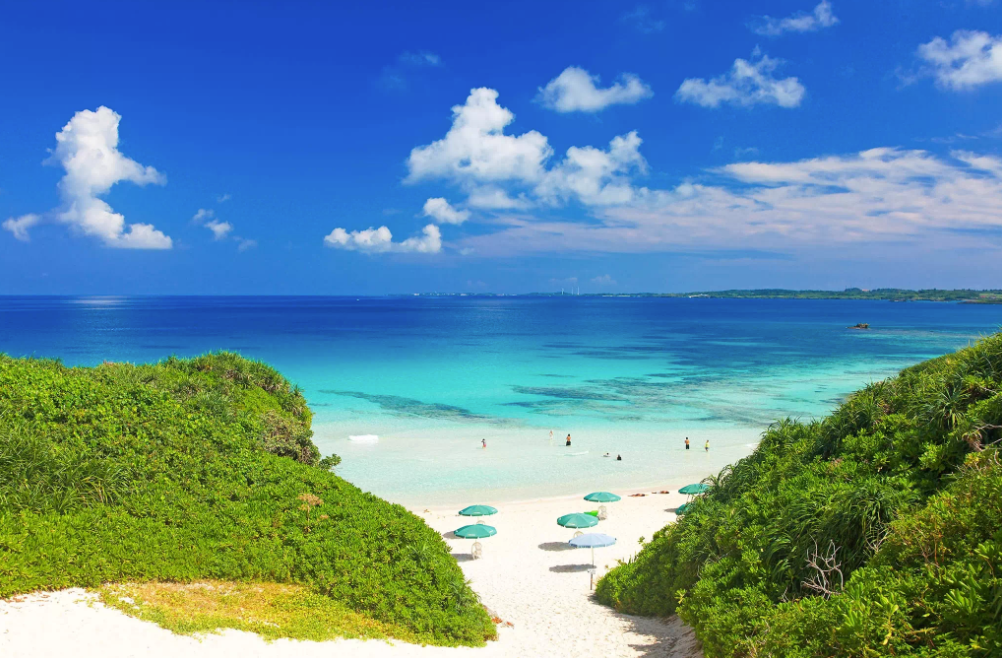
The Miyako Islands are a group of islands located in the Pacific Ocean, part of Okinawa Prefecture, Japan.
These islands are situated to the southwest of the main Okinawa Island, offering a more secluded and pristine environment.
The archipelago is known for its stunning white sandy beaches, clear turquoise waters, and vibrant coral reefs.
Miyako-jima, the largest island in the group, serves as the gateway to the surrounding smaller islands, including Irabu-jima, Shimoji-jima, Tarama-jima, and several others.
Natural Attractions and the Best Things to Do
The natural beauty of the Miyako Islands is unmatched, making them a paradise for beach lovers and water sports enthusiasts.
The islands are renowned for some of the best beaches in Japan, such as Maehama Beach and Yoshino Beach, which offer breathtaking vistas and crystal-clear waters perfect for swimming and sunbathing.
The surrounding coral reefs are a diver’s paradise, teeming with marine life and colorful corals.
For those interested in a more relaxed experience, the islands offer serene spots for kayaking in the mangroves, particularly around Irabu-jima.
Cultural and Historical Significance
The Miyako Islands have a rich cultural tapestry, with a history that reflects a blend of Ryukyuan, Japanese, and even Southeast Asian influences due to their historical trade routes.
Traditional festivals, such as the Pantu festival, showcase the unique cultural heritage of the islands, involving rituals for cleansing and good fortune.
The islands’ traditional crafts, including textiles and pottery, offer insight into the local artistry and way of life.
Activities and Experiences
Beyond the stunning beaches, the Miyako Islands offer a range of activities and experiences.
Diving and snorkeling are among the most popular, with numerous spots like Yabiji, the largest coral reef in Japan, providing spectacular underwater adventures.
For those who prefer staying above water, wind-surfing and sailing are great ways to enjoy the scenic beauty of the islands.
The local cuisine, highlighting fresh seafood and local specialties such as Miyako soba, promises a delightful culinary journey.
Best Time to Visit
The best time to visit the Miyako Islands is from April to June, when the weather is warm but not yet at the peak heat and humidity of summer.
This period also avoids the main rainy season, offering sunny days ideal for outdoor activities.
Late October to November is another good window, with comfortable temperatures and less crowded attractions.
While the islands can be visited year-round, it’s worth noting that the summer months from July to September are hot and can be prone to typhoons, which may affect travel plans.
6. Ishigaki-jima
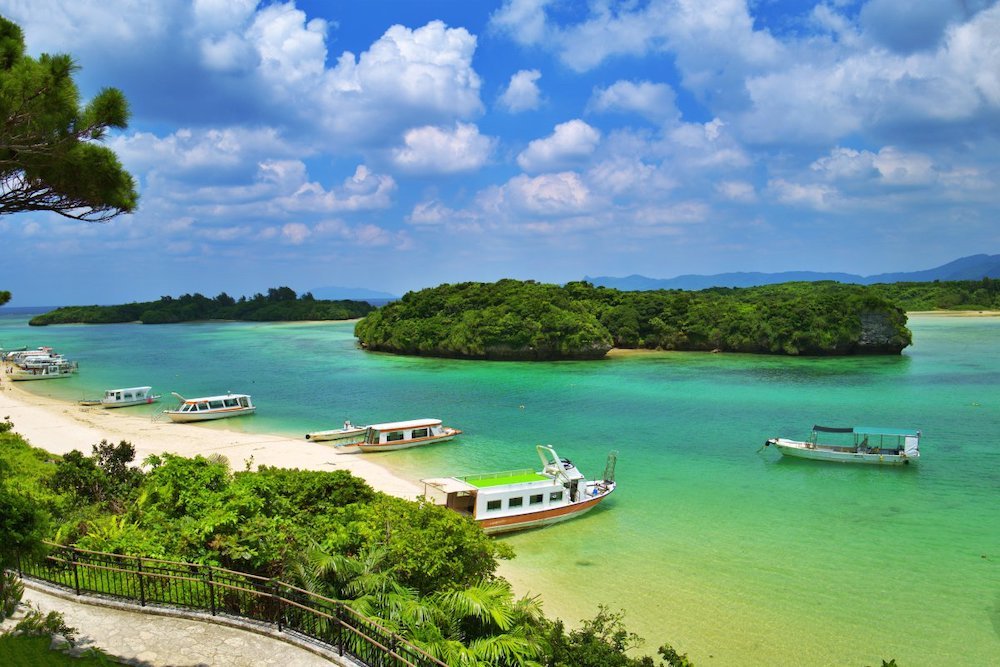
Ishigaki-jima is the second-largest island in the Yaeyama Island group, part of Okinawa Prefecture, and serves as the region’s transportation and tourism hub.
Situated approximately 411 kilometers southwest of Okinawa Hontō, this island is closer to Taiwan than to the Japanese mainland.
Ishigaki is famed for its diverse landscapes, which include mountainous terrain, dense jungles, and stunning beaches.
The island also serves as the gateway to the surrounding smaller islands, making it a central point for explorations in the area.
Natural Attractions and the Best Things to Do
Ishigaki-jima is celebrated for its natural beauty, ranging from the coral reefs that encircle the island to the scenic Kabira Bay, known for its clear blue waters and white sands.
The island’s interior is just as compelling, with hiking trails leading through lush forests to peaks like Mt. Nosoko and Mt. Omoto, the latter being the highest point in Okinawa Prefecture.
The beaches, such as Yonehara Beach, offer excellent opportunities for snorkeling and relaxing, while the clear night skies are perfect for stargazing.
Cultural and Historical Significance
The cultural fabric of Ishigaki-jima is rich and woven with traditions that have been passed down through generations.
The island has a distinct Ryukyuan cultural identity, with its traditional sanshin music, folk songs, and dances.
Historical sites, like the Torin-ji Temple with its iconic pagoda, offer a glimpse into the island’s spiritual heritage.
The local festivals, including the Ishigaki Island Yaeyama Festival, celebrate the island’s customs and communal spirit.
Activities and Experiences
Ishigaki-jima is a haven for adventurers and those seeking to immerse themselves in nature and culture.
Diving and snorkeling are unparalleled here, with sites like Manta Scramble attracting divers hoping to encounter manta rays.
Kayaking through the mangroves of the Miyara River offers a tranquil experience, while windsurfing and sailing capitalize on the island’s breezy conditions.
Culinary explorers can delight in Ishigaki beef, a local delicacy, and fresh seafood at the island’s many restaurants and markets.
Best Time to Visit
The ideal times to visit Ishigaki-jima are during the spring months of April and May, and the autumn months of October and November.
These periods offer mild weather, making it comfortable to enjoy both the beaches and the hiking trails.
The summer months, while warm, are also a popular time to visit, especially for water sports, though visitors should be mindful of the occasional typhoon.
The rainy season from May to June is less ideal for outdoor activities but can offer a unique perspective on the island’s lush landscapes.
7. Ikuchi-jima
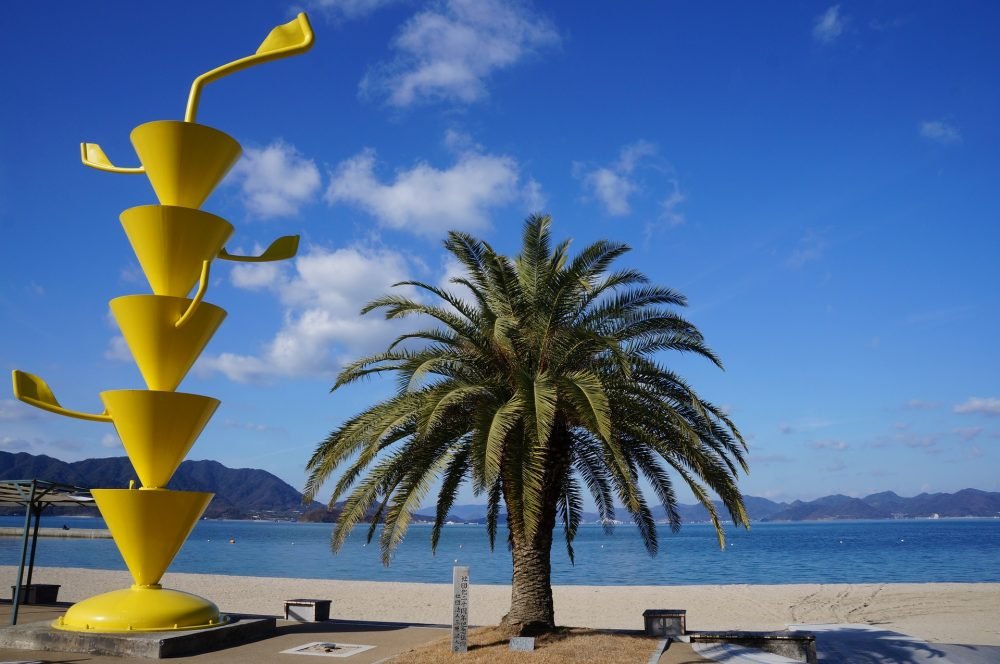
Ikuchi-jima is a picturesque island located in the Seto Inland Sea, part of Hiroshima Prefecture, Japan.
This island is part of the Shimanami Kaido, a famous route that connects the islands of the Seto Inland Sea with bridges, making it a popular destination for cyclists.
Ikuchi-jima is relatively small, with a comfortable, mild climate year-round, which supports a diverse range of flora and fauna.
The island is known for its beautiful landscapes, citrus groves, and friendly local community.
Natural Attractions and the Best Things to Do
The natural scenery of Ikuchi-jima includes beautiful beaches like Sunset Beach, which, as the name suggests, offers stunning sunset views.
The island’s interior is dotted with citrus orchards, and its coastlines are ideal for leisurely walks and cycling.
The Tatara Shimanami Park provides panoramic views of the Seto Inland Sea and its surrounding islands.
For cycling enthusiasts, the Shimanami Kaido offers a memorable experience with well-maintained paths and breathtaking views.
Cultural and Historical Significance
Ikuchi-jima harbors a rich cultural and historical background, with several temples and shrines, including the Kosanji Temple, known for its intricate and elaborate architecture.
This island also has a deep connection to the citrus industry, with local traditions and festivals celebrating the harvest of lemons and other citrus fruits.
The cultural fabric of the island is woven from the tight-knit community’s practices, traditional crafts, and the warm hospitality extended to visitors.
Activities and Experiences
Visitors to Ikuchi-jima can enjoy a variety of activities that highlight the island’s natural beauty and cultural richness.
Cycling is a prime activity due to the island’s inclusion in the Shimanami Kaido route, offering routes for all levels of cyclists.
Diving and snorkeling are popular in the clear waters surrounding the island, where marine life flourishes.
The local cuisine, heavily featuring citrus and seafood, provides a fresh and unique dining experience.
Cultural experiences like visiting the Kosanji Temple and exploring local art galleries enrich visitors’ understanding of the island’s heritage.
Best Time to Visit
The best time to visit Ikuchi-jima is during the spring (March to May) and autumn (September to November) months.
During these periods, the weather is mild, and the natural scenery is at its most vibrant, with cherry blossoms in spring and colorful foliage in autumn.
Summer (June to August) offers warm weather that is ideal for beach activities but can be quite hot for cycling.
The island is relatively quiet in terms of tourism, making it a year-round destination for those seeking a peaceful retreat.
However, visiting during the local festivals can provide a deeper insight into the island’s cultural life.
8. Enoshima

Enoshima is a small, picturesque island situated in Sagami Bay, close to Kamakura and Fujisawa, in Kanagawa Prefecture, Japan.
Connected to the mainland by a bridge, it is easily accessible and popular among both tourists and locals.
The island is characterized by its steep cliffs, lush botanical gardens, and the prominent Enoshima Shrine that spans across its terrain.
Despite its compact size, Enoshima is packed with natural beauty, historical sites, and modern attractions, including spas and restaurants.
Natural Attractions and the Best Things to Do
Enoshima offers a variety of natural attractions and activities.
The Enoshima Sea Candle, a lighthouse observation tower, provides panoramic views of Mount Fuji and the surrounding bay area, especially beautiful during sunset.
The island’s southern coast features the Iwaya Caves, accessible by walking trails that offer a glimpse into the island’s geological history.
Enoshima’s Samuel Cocking Garden, with its lush greenery and seasonal flowers, provides a serene escape amidst the island’s bustling atmosphere.
Cultural and Historical Significance
The cultural and historical roots of Enoshima are deep, with the island featuring prominently in Japanese mythology and history.
Enoshima Shrine, dedicated to Benzaiten, the goddess of music and entertainment, is a major cultural site, consisting of three separate shrines scattered across the island.
The legend of Benzaiten and the five-headed dragon is an integral part of the island’s lore, celebrated during festivals and depicted in local art.
Historical figures, including the shogun Minamoto no Yoritomo, are said to have visited the island, adding to its historical allure.
Activities and Experiences
Enoshima caters to a wide range of interests with its diverse activities and experiences.
For adventure seekers, the island offers sailing and other water sports, thanks to its favorable coastal conditions.
Exploring the Iwaya Caves and hiking around the island allow visitors to discover its natural and historical aspects.
Enoshima Aquarium is a family-friendly attraction, showcasing local marine life.
The local cuisine, particularly seafood, is a must-try, with restaurants offering fresh catch alongside views of the bay.
Spa EAS, a modern spa complex, offers relaxation with its hot springs and pools, some of which overlook Sagami Bay.
Best Time to Visit
The best time to visit Enoshima is during the spring (March to May) and autumn (September to November) months, when the weather is mild, and the crowds are smaller.
These seasons also showcase the island’s natural beauty, with cherry blossoms in spring and colorful foliage in autumn.
Summer (June to August) is peak tourist season, offering warm weather ideal for beach activities and water sports, but expect larger crowds.
Winter offers a quieter experience, with clear days offering stunning views of Mount Fuji, although it can be quite chilly.
9. Ōmishima

Ōmishima is situated in the Seto Inland Sea, part of Ehime Prefecture in Japan.
This island stands as the largest within the Geiyo Islands chain, connecting the main islands of Honshu and Shikoku via the Shimanami Kaido, a famous expressway that includes a series of bridges highly popular among cyclists.
Ōmishima’s geography features a mix of rugged coastlines, gentle hills, and verdant citrus groves, embodying the tranquil beauty characteristic of the Seto Inland Sea’s islands.
Despite modern connections, Ōmishima retains a laid-back, traditional atmosphere, offering a glimpse into rural Japanese island life.
Natural Attractions and the Best Things to Do
The natural landscape of Ōmishima provides a scenic backdrop for a variety of outdoor activities.
The island’s coastline, with its clear waters and hidden beaches, is ideal for swimming, kayaking, and fishing.
Inland, visitors can explore the picturesque citrus orchards and take leisurely walks or bike rides along paths that offer stunning views of the surrounding sea and islands.
The Oyamazumi Shrine’s ancient camphor trees, some of Japan’s oldest and largest, are a must-visit for nature lovers, symbolizing the island’s deep connection to nature.
Cultural and Historical Significance
Ōmishima boasts a rich cultural heritage, anchored by the Oyamazumi Shrine, dedicated to the gods of mountains, seas, and warriors.
The shrine houses an impressive collection of ancient armor and weapons, reflecting the island’s historical significance as a spiritual haven for samurai.
The island’s history is also intertwined with its role in maritime trade and navigation, contributing to its unique cultural landscape that blends Shinto practices with the livelihoods of fishing and citrus farming communities.
Activities and Experiences
Apart from its natural and cultural attractions, Ōmishima offers experiences that cater to a wide range of interests.
The island is a part of the Shimanami Kaido cycling route, making it a popular stop for cyclists traveling between Honshu and Shikoku.
Diving and snorkeling in the clear waters around the island reveal an underwater world teeming with marine life.
For those interested in Japanese craftsmanship, local workshops offer the chance to learn about traditional crafts, including citrus cultivation.
The island’s cuisine, featuring fresh seafood and citrus-based dishes, provides a taste of local flavors.
Best Time to Visit
The best time to visit Ōmishima is during the spring (March to May) and autumn (September to November) months, when the weather is pleasant, and the natural scenery is at its most beautiful.
Spring brings the blooming of flowers, including the renowned citrus blossoms, while autumn offers comfortable temperatures and vibrant fall colors.
Summer (June to August) is warm and ideal for beach activities but can be quite hot for extensive outdoor exploration.
Winters are mild, making Ōmishima a year-round destination, though the island’s pace slows during this season, offering a tranquil retreat.
10. Sadogashima (Sado Island)
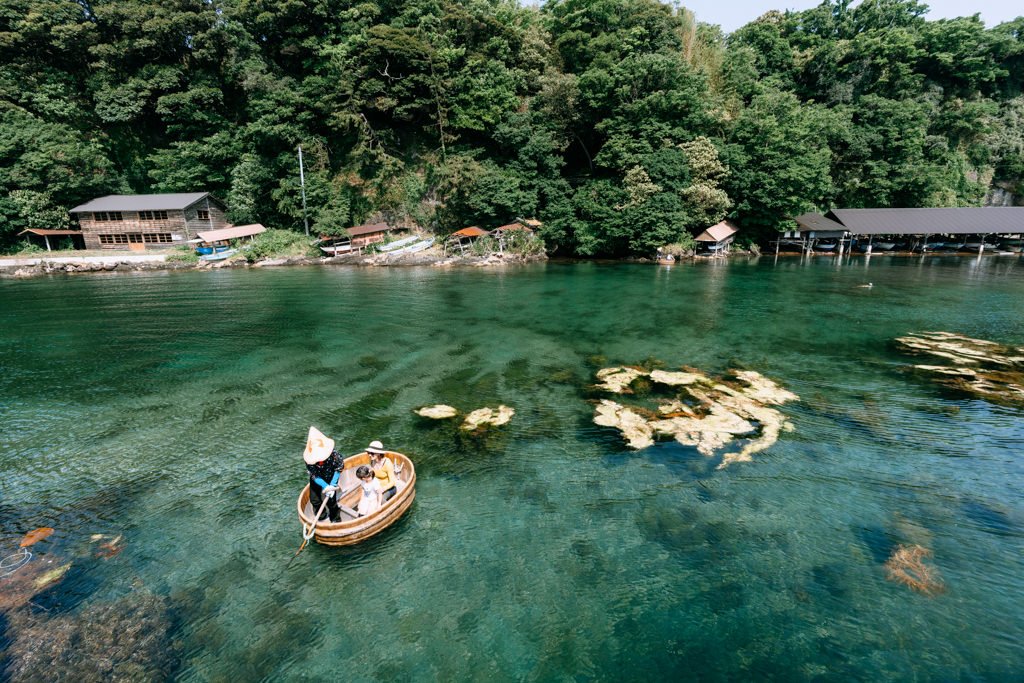
Sadogashima, commonly known as Sado Island, is situated off the coast of Niigata Prefecture in the Sea of Japan.
It is the largest island in Japan after the four main islands, covering an area of approximately 857 square kilometers.
Sado Island boasts a varied landscape, from rugged coastlines and serene beaches to lush mountains and traditional rice terraces, reflecting a rich natural environment that has been shaped by centuries of human habitation and agricultural practices.
Natural Attractions and the Best Things to Do
Sado Island is renowned for its natural beauty and outdoor activities.
The island’s diverse landscape offers something for every nature enthusiast, from hiking trails that traverse its scenic mountains to kayaking and paddleboarding in its tranquil bays.
Senkaku Bay’s dramatic cliffs and crystal-clear waters are a highlight for visitors, offering stunning views and excellent opportunities for marine exploration.
For bird watchers, the Toki Forest Park is a must-visit, dedicated to the protection of the endangered Toki (Japanese crested ibis).
Cultural and Historical Significance
Sado Island has a rich cultural and historical heritage, having once been a place of exile for political figures, artists, and intellectuals.
This unique history has cultivated a distinct cultural identity, with a thriving arts scene that includes the famous Kodo Taiko drumming group and the annual Earth Celebration festival.
The island’s history is also evident in its well-preserved Edo-period architecture, old gold mines, and traditional Noh theaters, offering a window into Japan’s past and the development of its cultural traditions.
Activities and Experiences
Beyond its natural and historical attractions, Sado Island provides a wide array of activities and experiences.
Visitors can delve into the island’s gold mining history at the Sado Kinzan Gold Mine, explore traditional crafts through hands-on experiences like pottery and bamboo crafts, or enjoy the local cuisine, which features fresh seafood and Sado’s renowned rice.
The island’s vibrant cultural festivals, including the Earth Celebration and the Sado Island Galaxy Art Festival, offer unique opportunities to engage with local traditions and the global arts community.
Best Time to Visit
The best time to visit Sado Island is during the late spring (May to early June) and early autumn (September to October), when the weather is pleasant, and the natural scenery is particularly vibrant.
These periods also avoid the peak of the summer tourist season, providing a more relaxed experience. Summer (late July to August) is popular for beachgoers and those looking to experience the island’s festivals, though it can be quite crowded.
Winter offers a quieter visit, with snow-covered landscapes that appeal to those interested in the serene beauty of Japan’s coastal winter, though travel may be affected by sea conditions.
11. Islands near Dōgashima
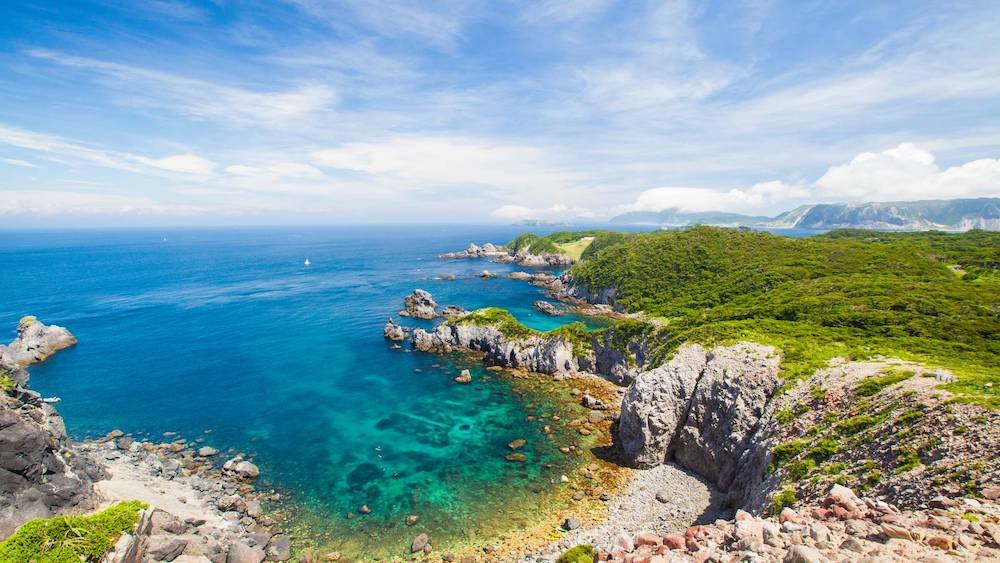
The islands near Dōgashima, located off the coast of the Izu Peninsula in Shizuoka Prefecture, are part of the scenic Nishi-Izu area, known for its dramatic coastline, clear waters, and natural hot springs.
These islands, including Mikurajima, Niijima, and Shikinejima among others, are celebrated for their rugged landscapes, volcanic origins, and the surrounding rich marine life.
The area is accessible by ferry from the mainland, offering a secluded escape into nature’s beauty.
Natural Attractions and the Best Things to Do
The islands near Dōgashima are a paradise for nature lovers and outdoor enthusiasts.
They offer a variety of natural attractions, from the stunning rock formations and caves accessible by boat tours around Dōgashima to the pristine beaches and crystal-clear waters ideal for swimming, snorkeling, and diving.
The volcanic nature of these islands has also created numerous hot springs, providing a unique blend of relaxation and natural beauty.
Hiking trails offer breathtaking views of the Pacific Ocean and the chance to explore the islands’ lush interiors.
Cultural and Historical Significance
Though more renowned for their natural beauty, the islands near Dōgashima also hold cultural and historical significance.
These islands have a long history of human habitation, reflected in various archaeological sites and traditional fishing villages.
Local traditions, such as sea salt making and fishing techniques, continue to play an important role in the islands’ cultural identity.
Seasonal festivals and events celebrate the islands’ heritage and offer insights into the community’s way of life.
Activities and Experiences
Visitors to the islands near Dōgashima can enjoy a wide range of activities that highlight the area’s natural and cultural offerings.
Diving and snorkeling in the clear waters reveal a vibrant underwater world, while kayaking and paddleboarding offer a peaceful way to explore the coastline.
The islands’ hiking trails cater to all levels, leading to panoramic viewpoints, secluded beaches, and historical sites.
The local cuisine, featuring fresh seafood and regional specialties, is a must-try, offering a taste of the islands’ rich maritime culture.
Best Time to Visit
The best time to visit the islands near Dōgashima is from late spring (April to June) when the weather is mild and the natural scenery is at its peak, to early autumn (September to November) when the temperatures are comfortable, and the tourist crowds have thinned.
The summer months (July and August) are popular among visitors looking to enjoy the beaches and outdoor activities, though this period can be crowded and hotter.
Winter offers a quieter experience, with the chance to enjoy the islands’ hot springs against a cooler backdrop, though sea conditions can affect travel plans.
12. Rishiri-tō
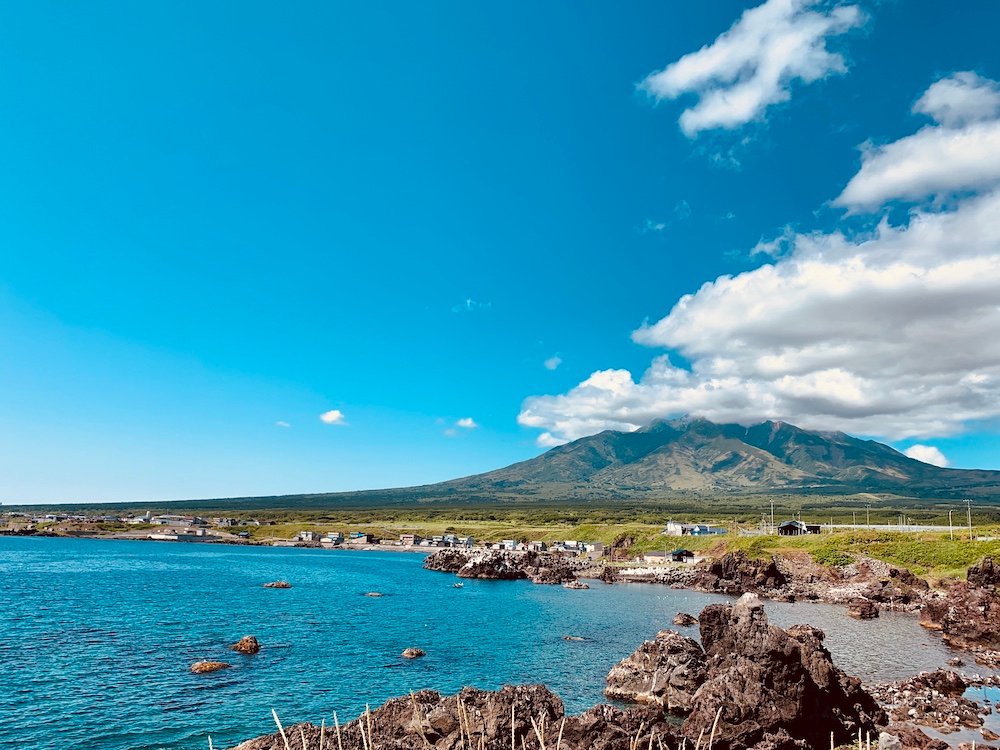
Rishiri-tō, often simply called Rishiri Island, is a remote island in the Sea of Japan, located off the northwest coast of Hokkaido, Japan.
Dominated by the impressive Mount Rishiri, a dormant volcano that rises sharply to 1,721 meters and is often referred to as the “Rishiri Fuji” for its conical shape resembling Mount Fuji.
The island covers an area of about 183 square kilometers and is part of the Rishiri-Rebun-Sarobetsu National Park, known for its pristine natural landscapes and diverse ecosystems.
Natural Attractions and the Best Things to Do
Rishiri Island offers a plethora of natural attractions and activities, particularly for those who enjoy the outdoors.
Hiking Mount Rishiri is a highlight for many visitors, offering challenging trails and breathtaking views from the summit on clear days.
The island is also surrounded by rich marine life, making it a fantastic spot for diving and snorkeling, especially around the coral reefs.
Cycling around the island provides a leisurely way to enjoy its scenic beauty, including coastal roads with stunning vistas of the sea and landscapes.
Cultural and Historical Significance
While primarily known for its natural beauty, Rishiri Island also holds cultural and historical importance.
The island has been inhabited for centuries, with its people traditionally relying on fishing and seaweed harvesting for their livelihoods.
Various Ainu cultural sites can be found on the island, providing insight into the indigenous people of northern Japan.
Local festivals, such as the Rishiri Island Marathon and the Sea Urchin Festival, reflect the island’s connection to the sea and its resources.
Activities and Experiences
In addition to hiking and water sports, Rishiri Island offers a range of activities and experiences that highlight its natural and cultural heritage.
Bird watching is popular, with the island’s diverse habitats supporting a variety of bird species.
The local cuisine is another highlight, featuring fresh seafood such as sea urchin and kelp, staples of the island’s diet.
Visitors can also enjoy hot springs, particularly those offering views of Mount Rishiri, for a relaxing experience after a day of exploration.
Best Time to Visit
The best time to visit Rishiri Island is during the summer months from June to August, when the weather is mild, and the island’s flora, including alpine flowers, are in full bloom.
This period offers the best conditions for hiking and other outdoor activities.
However, it’s also the busiest time, so early reservations for accommodations are recommended.
Late spring (May) and early autumn (September) are also good times to visit, with fewer tourists and still pleasant weather, though some services may be reduced outside of the peak season.
Winter on Rishiri Island is harsh, with heavy snowfall and cold temperatures, making it suitable only for winter sports enthusiasts and those seeking solitude.
13. Izu-Ōshima
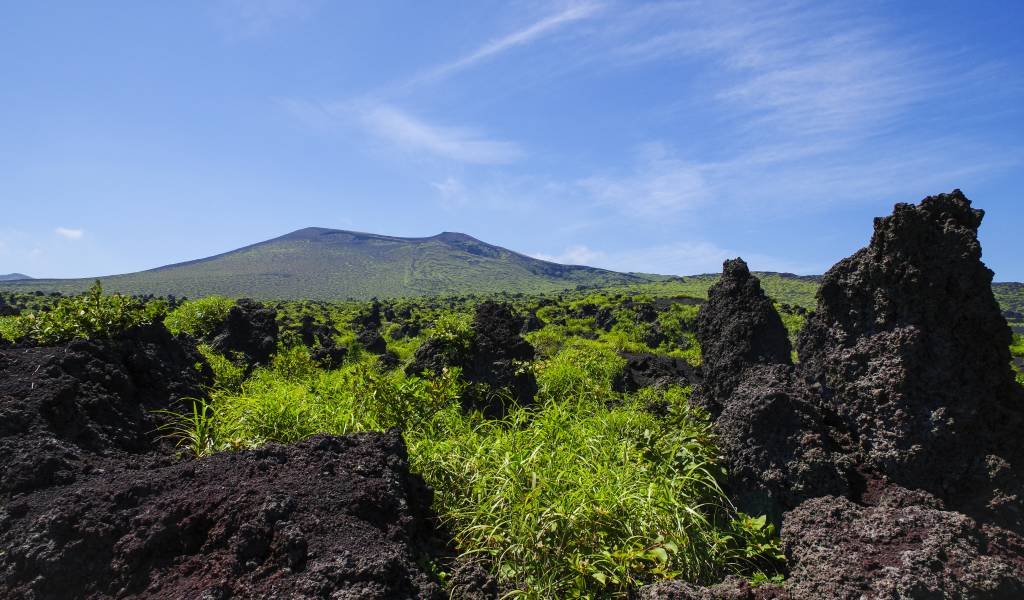
Izu-Ōshima is the largest of the Izu Islands, a group of volcanic islands under the administration of Tokyo, located about 100 kilometers south of the Japanese capital in the Pacific Ocean.
The island is dominated by Mount Mihara, an active volcano that has shaped both the landscape and the history of the island.
Izu-Ōshima spans an area of approximately 91 square kilometers, featuring rugged coastlines, lush forests, and black sandy beaches due to its volcanic nature.
Natural Attractions and the Best Things to Do
The natural environment of Izu-Ōshima offers a variety of attractions and activities for visitors.
Hiking trails around Mount Mihara provide stunning views and the opportunity to explore the crater of an active volcano.
The island’s beaches, such as Habushiura Beach, are unique with their black sand and are popular for swimming, sunbathing, and surfing.
The Ura-Sabaku Desert in the interior is a stark landscape of volcanic rock, offering a contrast to the island’s otherwise green scenery.
Cultural and Historical Significance
Izu-Ōshima has a rich cultural and historical background, influenced by its geological activity and strategic location.
The island has been a place of exile during various periods in Japanese history, adding a layer of historical depth to its identity.
Local festivals, such as the Camellia Festival, celebrate the island’s natural beauty and cultural heritage.
The Oshima Tsubaki Oil, made from camellia seeds, is a traditional product of the island, used for centuries in Japan for its beauty benefits.
Activities and Experiences
Beyond its natural beauty, Izu-Ōshima offers a range of activities and experiences.
Diving and snorkeling in the clear waters around the island reveal vibrant marine life and underwater lava formations.
The island’s volcanic hot springs, or onsens, provide a relaxing experience with therapeutic benefits.
Culinary enthusiasts can enjoy local specialties, including fresh seafood and dishes made with camellia oil.
Cultural experiences, such as visiting the Oshima Volcano Museum, offer insights into the island’s volcanic activity and its impact on local life.
Best Time to Visit
The best time to visit Izu-Ōshima is during the spring (March to May) and autumn (September to November) months, when the weather is mild and pleasant, ideal for outdoor activities and exploring the island.
Spring is particularly beautiful with the blooming of camellias, the island’s symbol.
Summer (June to August) is warmer and suitable for beach activities but also brings the risk of typhoons.
Winter (December to February) is cooler and offers a quiet atmosphere, with the opportunity to enjoy the island’s hot springs in a more serene setting.
14. Naoshima

Naoshima is a small island in the Seto Inland Sea, part of Kagawa Prefecture, Japan.
Known internationally as a haven for contemporary art and architecture, Naoshima blends natural beauty with man-made masterpieces.
The island covers an area of approximately 8 square kilometers, featuring a hilly landscape with stunning views of the surrounding sea.
Its transformation into an art hub has made it a unique destination among the Japanese islands, attracting art lovers and travelers from around the world.
Natural Attractions and the Best Things to Do
While Naoshima is celebrated for its art installations and architectural sites, the island’s natural landscape offers a tranquil setting that complements its cultural attractions.
The sandy beaches, such as Benesse House Beach, provide peaceful spots for relaxation with views of the Seto Inland Sea.
Exploring the island by bicycle offers a leisurely way to take in both the natural sights and art pieces scattered across Naoshima, including outdoor sculptures and installations.
Cultural and Historical Significance
Naoshima’s transformation into an art destination began in the 1980s, with the support of the Benesse Corporation and the vision of architect Tadao Ando.
This collaboration led to the creation of several iconic museums and art spaces, including the Benesse House Museum, the Chichu Art Museum, and the Art House Project in the traditional Honmura district.
These institutions house works by renowned artists such as Yayoi Kusama, James Turrell, and Walter De Maria, integrating art with the island’s landscape and community life.
Activities and Experiences
Visiting Naoshima’s museums and art installations is the primary activity for most visitors, offering a unique blend of contemporary art and architecture in a natural setting.
The island’s art sites, like the Lee Ufan Museum and the iconic yellow pumpkin by Yayoi Kusama, provide immersive cultural experiences.
Aside from art tourism, Naoshima offers opportunities for enjoying local cuisine, with cafes and restaurants serving fresh seafood and regional specialties.
The Naoshima Bath “I♥湯,” an art facility designed by Shinro Ohtake, offers a distinctive onsen experience that combines relaxation with art.
Best Time to Visit
The best time to visit Naoshima is during the spring (March to May) and autumn (September to November) months, when the weather is mild and pleasant, making it ideal for exploring the island’s art sites and natural beauty.
These seasons also feature lower rainfall compared to summer, enhancing the outdoor experience.
While Naoshima can be visited year-round, it’s worth noting that some art sites may have different operating hours or closures during the winter months, so it’s advisable to check in advance.
15. Rebun-tō

Rebun-tō, often simply known as Rebun, is a remote island in the Sea of Japan, part of the Rishiri-Rebun-Sarobetsu National Park.
It is located off the northwest coast of Hokkaido, near its sister island Rishiri-tō. Rebun is famed for its wildflower meadows, which bloom from spring through summer, earning it the nickname “Island of Flowers.”
The island stretches approximately 29 kilometers in length and 8 kilometers in width, featuring a diverse landscape of steep cliffs, rolling hills, and rich coastal waters that support a unique ecosystem.
Natural Attractions and the Best Things to Do
Rebun’s natural beauty is most prominently displayed through its alpine flora, which attracts botanists and nature lovers.
Hiking is the primary activity on the island, with trails offering varying degrees of difficulty and scenic beauty, including the renowned 8-hour course that spans much of the island.
The coastline provides beautiful views of the sea and neighboring Rishiri-tō, with opportunities for sea kayaking and fishing.
Cape Sukoton and Cape Gorota are notable spots for their breathtaking panoramic views.
Cultural and Historical Significance
Rebun has a rich Ainu heritage, with several archaeological sites offering insights into the lives of its indigenous people.
The island’s strategic location has also imbued it with a fascinating history, serving as a lookout and defense point throughout the centuries.
Local traditions reflect a deep connection with the sea and the land, with festivals and culinary practices celebrating this bond.
The Rebun Island Museum provides a comprehensive look at the island’s natural and cultural history, showcasing artifacts and detailing the island’s flora.
Activities and Experiences
Aside from hiking and exploring the natural scenery, Rebun offers a variety of activities that allow visitors to immerse themselves in its serene environment.
Snorkeling and diving in the clear waters reveal an underwater world of kelp forests and marine life.
The island’s cuisine, heavily influenced by its maritime setting, includes fresh seafood dishes such as sea urchin and kelp, offering a taste of the local harvest.
For those seeking relaxation, the island’s natural hot springs offer a soothing experience with stunning views of the surrounding sea.
Best Time to Visit
The ideal time to visit Rebun is from June to August, during the peak of the wildflower season when the island’s landscapes are at their most vibrant.
This period also coincides with the best weather conditions for hiking and other outdoor activities.
Early September provides a quieter experience with milder weather, although the floral displays begin to wane.
Visitors should note that the island’s northern location can result in cooler temperatures and fog, even in summer.
Winter visits are possible but recommended mainly for those looking for solitude, as some services and accommodations may be limited.
Planning Your Trip
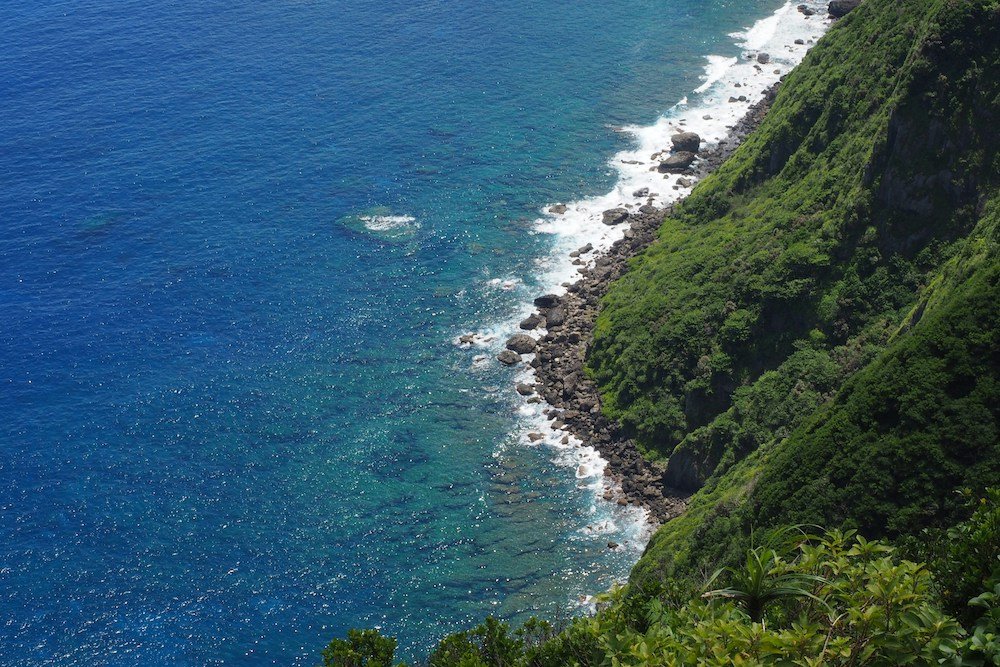
Transportation Tips for Reaching and Exploring the Islands
- Air Travel: Many of the islands, especially the more remote ones like Okinawa-Hontō, Yakushima, and Rebun-tō, are accessible by air. Local airlines operate flights from major cities in Japan to these islands. For international travelers, connecting flights from Tokyo, Osaka, or Nagoya are common.
- Ferry Services: Ferries are a lifeline for the Japanese islands, offering a scenic and often more economical option for reaching destinations like Sado Island, Izu-Ōshima, and the Kerama Islands. Check schedules in advance, as they can be seasonal and affected by weather conditions.
- Local Transportation: Once on the islands, options like local buses, rental cars, and bicycles offer the best ways to explore. Some islands, such as Naoshima and Ikuchi-jima, are well-suited for cycling. Others, like Ishigaki-jima, might require a car to fully explore the more secluded spots.
Recommended Durations for Visits
- Short Stays (1-3 days): Ideal for smaller islands like Enoshima, Naoshima, and the Miyako Islands, where you can enjoy the main attractions without rushing.
- Longer Stays (3-7 days): Recommended for larger islands with diverse landscapes and activities, such as Okinawa-Hontō, Yakushima, and Sado Island. This gives you enough time to immerse yourself in the natural beauty and cultural experiences.
- Extended Stays (Over a week): If you’re visiting islands with significant distances between attractions or planning to explore multiple islands in one trip, like combining a visit to Rishiri-tō and Rebun-tō, consider an extended stay.
Advice on Traveling Between Islands
- Plan Your Route: Determine the most efficient route based on your island destinations. Combining visits to geographically proximate islands, such as Izu-Ōshima and other Izu Islands, can save time and money.
- Use Passes: For extensive travel, look into ferry passes or air passes that offer multiple rides at a discounted rate. This can be particularly useful in regions with frequent ferry connections, like the Seto Inland Sea.
- Check Weather and Seasonal Factors: Weather can significantly impact travel plans, especially when it comes to ferry services. Typhoon season (usually late summer to early autumn) can lead to cancellations, so it’s wise to have flexible travel plans and stay informed of local weather forecasts.
- Cultural Festivals and Events: Timing your visit to coincide with local festivals can enhance your experience, but it can also mean busier periods and higher demand for accommodations. Book well in advance if you plan to attend events like the Earth Celebration on Sado Island or the Okinawa Hari Dragon Boat Races.
What to Pack
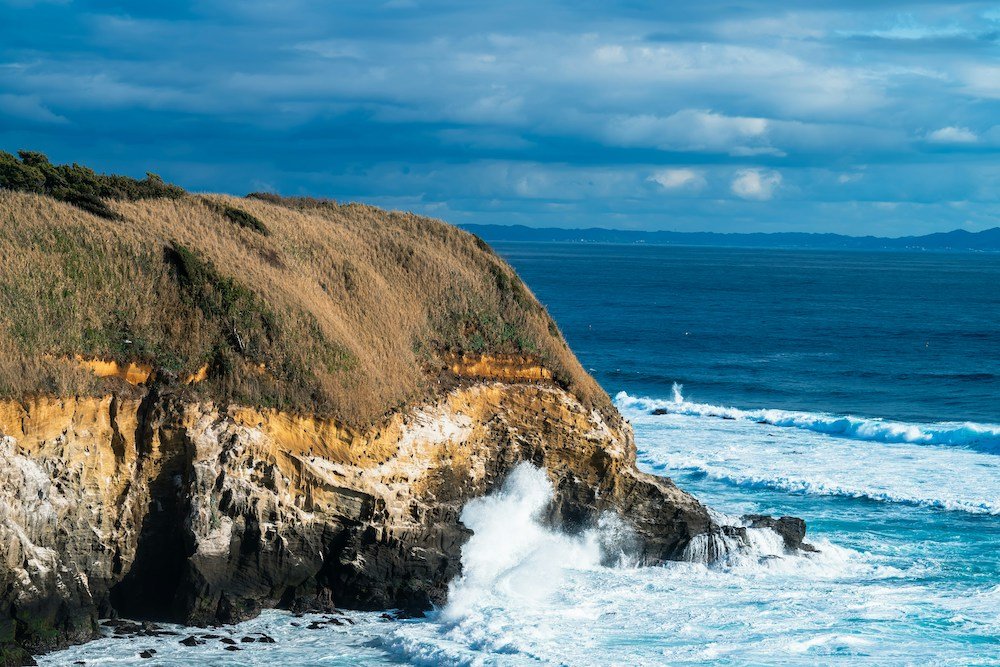
Island-specific Gear
- Snorkeling Equipment: For islands renowned for their marine life and coral reefs, like the Kerama Islands and Ishigaki-jima, consider bringing your snorkel, mask, and fins. While rentals are available, having your own gear ensures a perfect fit and hygiene.
- Hiking Boots: Sturdy, comfortable footwear is essential for exploring the rugged terrains of Yakushima and Rishiri-tō. Waterproof and breathable options are best, as they adapt to various weather conditions and challenging trails.
- Waterproof Bag: A waterproof bag or case for your electronics and valuables is crucial, especially if you’re engaging in water activities or visiting during the rainy season.
- Light Layers: The weather can vary dramatically, from the subtropical climate of Okinawa-Hontō to the cooler, more variable conditions on islands like Rebun-tō. Packing light layers allows for easy adjustment to changing temperatures.
- Sun Protection: High-SPF sunscreen, a wide-brimmed hat, and UV-protective clothing are must-haves to protect against the strong sun, especially in summer and on islands closer to the equator.
Sustainable Travel Essentials
- Reusable Water Bottle: Many islands have potable water, allowing you to refill your bottle and reduce plastic waste. Insulated bottles are great for keeping water cold or tea hot, depending on the season.
- Eco-friendly Toiletries: Biodegradable soap, shampoo, and sunscreen are kinder to the marine ecosystems, especially important if you’re snorkeling or swimming around coral reefs.
- Reusable Shopping Bag: A compact, foldable shopping bag can come in handy for market visits or picnics, helping to minimize plastic bag use.
- Portable Solar Charger: For those exploring off the beaten path, a solar charger ensures your devices stay powered without relying on scarce power outlets, reducing energy consumption.
- Coral-safe Sunscreen: When swimming or snorkeling, it’s vital to use sunscreen that doesn’t harm marine life. Look for products free from oxybenzone and octinoxate, which are known to contribute to coral bleaching.
Conclusion
Japan’s islands are a mosaic of breathtaking landscapes, rich cultural tapestry, and unparalleled natural beauty, each offering its own unique experiences and adventures.
From the ancient cedar forests of Yakushima to the vibrant coral reefs of the Kerama Islands, the serene spiritual sites on Ikuchi-jima, and the dynamic art scene of Naoshima, every island has its own story to tell, its own slice of paradise to offer.
These islands invite you to step beyond the familiar and immerse yourself in experiences that defy the ordinary.
Whether it’s the thrill of diving into the azure waters of Ishigaki-jima, hiking the majestic trails of Rishiri-tō, soaking in the rich history and traditions of Sado Island, or simply enjoying the tranquility of a sunset on Enoshima, Japan’s islands offer endless opportunities for exploration, adventure, and relaxation.
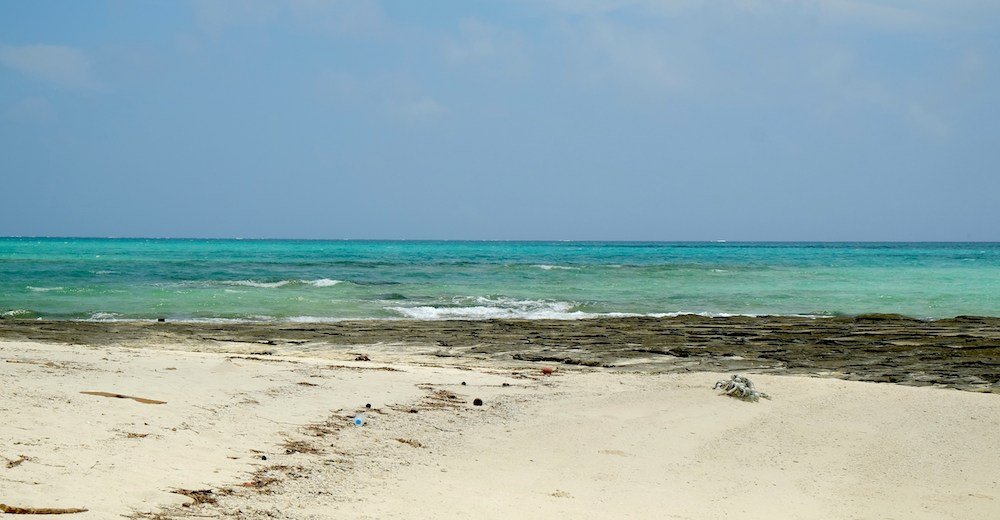
FAQ’s About Japanese Islands:
What is the best Japanese island to visit?
Determining the “best” Japanese islands to visit largely depends on what you’re looking for in your travels.
For nature enthusiasts, Yakushima, with its ancient cedar forests and UNESCO World Heritage status, offers unparalleled hiking experiences.
Those seeking a blend of beautiful beaches, rich culture, and historical sites might find Okinawa-Hontō to be the ideal destination.
Meanwhile, art lovers and those seeking a modern cultural experience should not miss Naoshima, known for its contemporary art museums and installations.
Each island offers unique experiences, making “the best” a matter of personal preference.
Is it worth going to Kyushu island?
Absolutely, Kyushu Island is worth visiting.
As Japan’s third-largest island, it offers a rich tapestry of experiences, from the steaming hot springs and volcanic landscapes of Beppu and Aso to the historic sites of Nagasaki.
Kyushu is also renowned for its vibrant food scene, with specialties like Hakata ramen and Kagoshima’s kurobuta pork.
The island’s mix of natural beauty, historical significance, and culinary delights make it a compelling destination for any traveler to Japan.
What island is Mount Fuji on?
Mount Fuji is not located on an island but rather on the main island of Honshu, Japan.
It straddles the boundary between the Yamanashi and Shizuoka prefectures and is accessible from Tokyo.
As the country’s highest peak, Mount Fuji is a cultural icon and a popular destination for both Japanese and international tourists, known for its scenic beauty and the opportunity it offers for climbing.
What island is close to Kyoto?
The closest significant island to Kyoto is Shikoku, the smallest of Japan’s four main islands.
While not immediately adjacent, Shikoku lies to the south of Honshu, where Kyoto is located, and is accessible via several bridges and ferry services.
Shikoku is famous for its 88-temple pilgrimage route, beautiful natural landscapes, and the Seto Inland Sea’s scenic coastline.
How do you visit Japanese islands?
Visiting Japan’s islands typically involves a combination of air travel and ferry services.
Major islands like Okinawa and Hokkaido are easily accessible by domestic flights from Japan’s larger cities.
For smaller or more remote Japanese islands, such as the Izu Islands or the islands in the Seto Inland Sea, ferries are often the best option.
Japan’s efficient public transportation system and domestic travel networks also offer package tours and passes, making island exploration both accessible and convenient.
What are the 8 great islands of Japan?
The “8 Great Japanese Islands” traditionally refers to the country’s four largest islands—Honshu, Hokkaido, Kyushu, and Shikoku—along with four of the larger islands in the Okinawa Prefecture: Okinawa Island, Iriomote Island, Ishigaki Island, and Miyako Island.
These islands represent the major geographic and cultural regions of Japan, each offering distinct landscapes, climates, and experiences.
What are the two islands under Japanese rule?
Japan has sovereignty over numerous islands, but if referring specifically to two significant ones under its rule, one might consider the main island of Honshu, where the capital Tokyo is located, and Hokkaido, the northernmost of Japan’s main islands.
Both play critical roles in Japan’s geography, economy, and culture.
However, if the question pertains to contested islands, it could refer to the Senkaku Islands, which are disputed with China and Taiwan, or the Northern Territories (Southern Kurils), disputed with Russia.
Is Oshima Island worth visiting?
Oshima Island, or Izu-Ōshima, is definitely worth visiting for those interested in natural beauty, hiking, and volcanic landscapes.
As the largest of the Izu Islands, Oshima offers visitors the chance to explore an active volcano, Mount Mihara, enjoy beautiful beaches with black volcanic sand, and experience the unique culture and hospitality of island residents.
Its proximity to Tokyo also makes it an accessible escape for those looking to experience nature and tranquility away from the hustle and bustle of the city.





